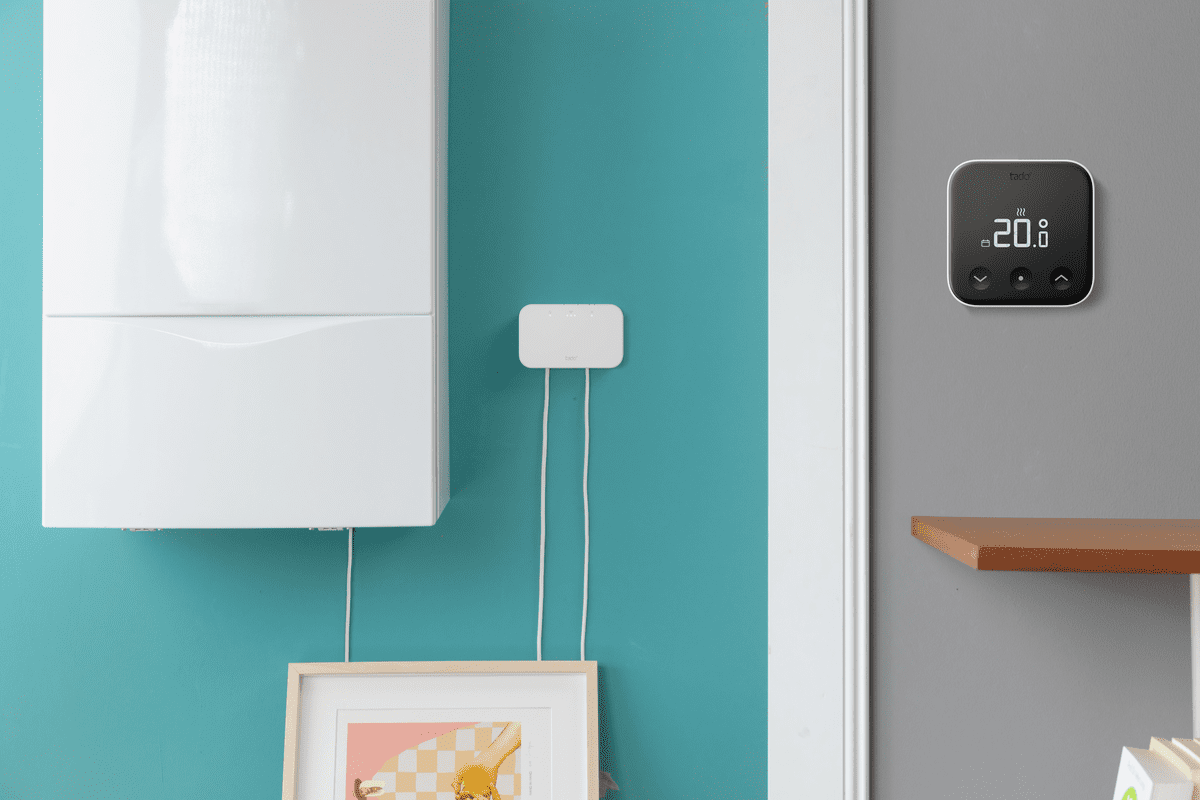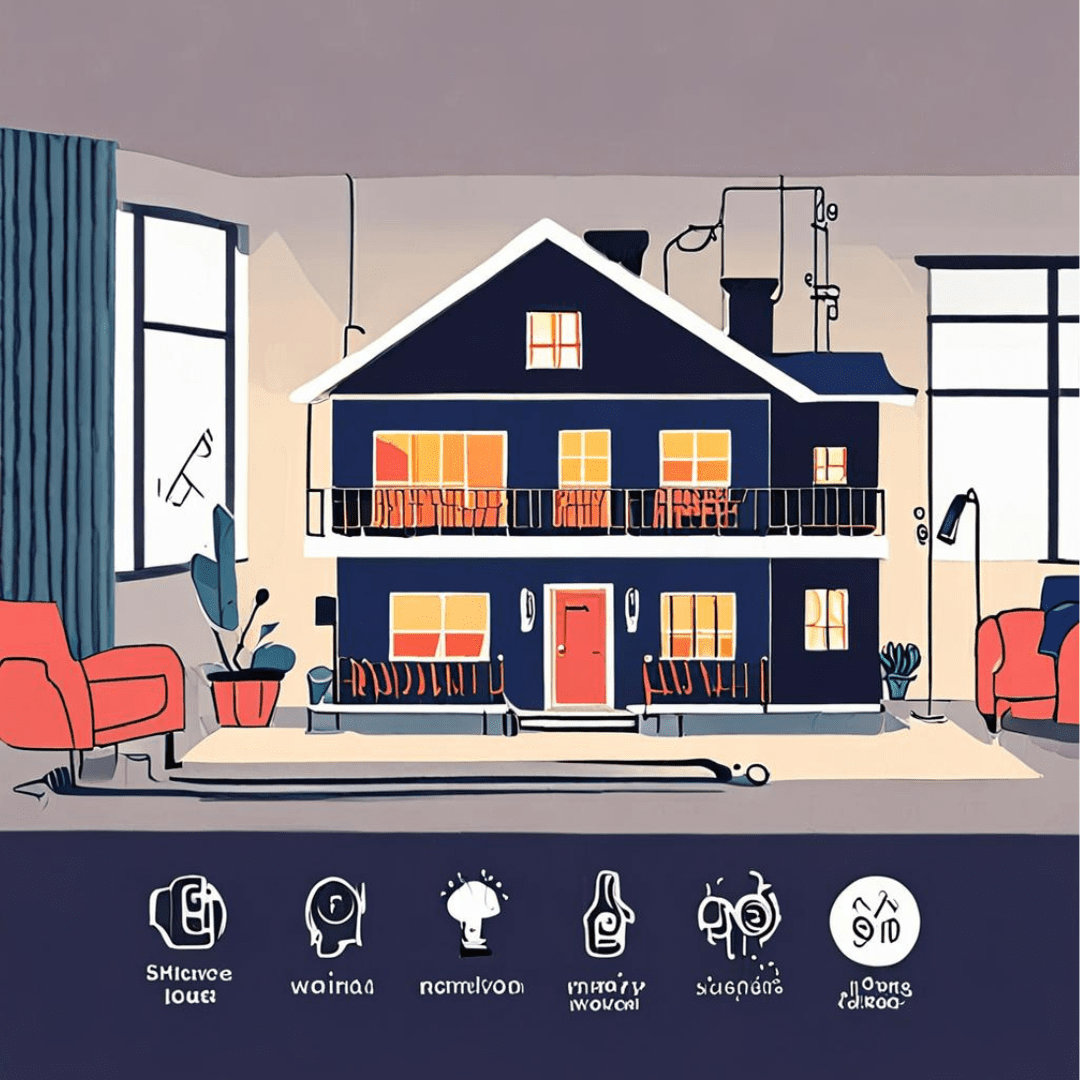What is OpenTherm and How is it Important for Managing Heating in Smart Homes?
If you’re building a smart home or have already started, one area that you’ve either implemented or are considering is energy management and heating control. But you can’t simply go out and buy a smart thermostat and get instant results from your heating system. You need OpenTherm.

Please note: This page may contain affiliate links. Read our ethics policy
If you’re building a smart home or have already started, one area that you’ve either implemented or are considering is energy management and heating control. With an increasing number of Matter-compatible energy and heating controllers on the market, the interconnectivity and automation options are increasing.
But you can’t simply go out and buy a smart thermostat and get instant results from your heating system. While direct control over smart radiator valves is an option, the best results can only be achieved by connecting a smart thermostat to your boiler.
For this, you need OpenTherm.
What is OpenTherm?
Established in 1996, OpenTherm (also known as OT) is an open-standard protocol designed for heating systems that enables communication between appliances and thermostats.
Heating systems are notoriously complicated, so the existence of OpenTherm is a huge advantage for smart home design. It is suitable for all types of mainstream heating systems, such as boilers and radiators, underfloor heating systems, and electric panel radiators.

With an OpenTherm-compatible smart heating system (such as the Tado X smart thermostat range, pictured above), you can implement greater control over your home’s temperature, potentially on a room-by-room basis. If done correctly, this can save money on energy bills.
How OpenTherm Works
Developed by Honeywell, OpenTherm has been widely used across the European mainland over the past 25+ years. It is slowly being incorporated into smart heating systems in the United Kingdom. In North America, heating systems and standards differ considerably, and HVAC (Heating, ventilation, and air conditioning) controls can be remotely managed over standard Wi-Fi. As such, OpenTherm probably won’t be adopted there.
An OpenTherm system basically consists of three main components:
-
Boiler
-
Controller
-
Thermostat
OpenTherm enables constant communication between the thermostat and a modern, modulating boiler. So, rather than simply switching the boiler on and off, the thermostat, via OpenTherm, tells the boiler to reach a specific temperature. Not only that, the boiler will slow down as it nears the target temperature, using less fuel.
Because communication is two-way, the boiler can communicate its temperature and status, while the thermostat shares the current desired target temperature.
While newer boilers have OpenTherm built-in, it can also be added added via an adapter. This is typically situated close to the boiler, and is wired up to the boiler’s dedicated OpenTherm terminals, as per the manufacturer’s documentation.
NOTE: GAS SAFE approved personnel is required for installation of any boiler and boiler add-ons in the UK. Similar certification is required across the EU.
Modern boilers in the UK and Europe typically have OpenTherm built in, or have an adapter attached. Most people get these with basic battery-controller wireless thermostats, unaware that there is actually far more functionality available.
The Importance of OpenTherm in Smart Homes
Local legislation across the UK and EU make having an OpenTherm-compatible boiler more-or-less compulsory. The benefits the system brings are part of the Boiler Plus policy in the UK, which demands a boiler be at least 92% efficient.
Incorporating OpenTherm into existing smart home systems has various benefits, from voice assistant and mobile app control of temperature to improved control over how the home is heated. Rather than rely on a single universal thermostat for the entire home, the protocol enables precise control of temperature and responsive heating, when used as part of a smart home.
Remote monitoring of temperatures is possible via suitable smart home mobile apps, which can also be used to configure schedules for heating. You can specify zones that should be heated at particular times. Depending on your smart home thermostat system, you might even be able to setup geofencing to activate the heating when you’re a certain distance from home, ensuring you enter a nice warm house.
Interoperability with Matter
Matter’s emergence as a unified smart home protocol has already lead to a revolution in the smart home. Standardized communication is enabling interoperability between once-disparate hardware, with more Matter-specific devices being released. While OpenTherm and Matter are likely to remain completely separate, the protocols are jointly vital in mature smart home heating management.
Smart heating systems with OpenTherm and Matter support are available in the UK and Europe. These are:
As the Matter protocol expands (Matter 1.3 introduced support for energy management systems), this is likely to expand to other smart thermostat manufacturers. For example, Ecobee is believed to be committed to Matter, but is yet to release a compatible device.
How OpenTherm Can Enhance Your Smart Home
OpenTherm is clearly a useful protocol for heating system controllers to communicate with thermostats. But how does it really improve things?

- Complete control over heating: a basic OpenTherm thermostat can control the temperature, typically with a built-in thermometer to detect when the target temperature is reached. More advanced thermostats with smart home integration take this to another level.
- Future-proofing: using OpenTherm future-proofs your home, not just as a quality of life improvement, but something that could potentially improve your home’s value.
- Efficiency: energy prices are high, and heating needs to be more closely controlled. With OpenTherm, better control over boiler temperature is possible, resulting in savings, both in fuel and money.
- Boiler diagnostics: OpenTherm provides diagnostics for boiler care. This is information that can be shared with engineers. (Some power companies provide subscription-based hardware to report boiler issues directly.) Diagnostics can be checked via smartphone apps, and even through some smart thermostats.
- Increased boiler lifespan: Better efficiency will ensure your boiler lasts at least to its target lifespan, if not beyond.
As noted, boilers installed in the UK and Europe over the past 15-20 years have come with OpenTherm readily available. Most homes in these locations are using a remote, wireless thermostat to set a single temperature. This itself is an improvement on what went before, but most significantly, it is really just a first step.
All of the thermostat control systems – Nest, Hive, Tado, etc. – support OpenTherm where it is available. This means that all of these homes have the potential to be upgraded to superior heating control and benefit from energy savings, and all of those other advantages.
And with Matter compatibility, OpenTherm is simply going to become more important in the regions where it is in use, particularly as energy costs rise.
About the Author

Christian Cawley
Editor in Chief
Christian has been writing about technology since the mid 2000s, and has been published in numerous publications, online and in print. These include Android Magazine, Linux User & Developer, Linux Format, Tech Radar, Tom's Hardware, and Computer Active. From 2014-2024, he was a section editor and later deputy editor at MakeUseOf, before joining the Matter Alpha team. Christian enjoys old video games (mainly C64, Amiga, and MS-DOS), classic TV, and telling everyone who will listen that they should have a robot cleaner. When he's not shaping articles, Christian is a dad to three dancers, collects Lego, and is an avid home chef.
Smart Thermostat X
The tado° Smart Thermostat X (Part Number: RU04) is a smart heating control system that allows for individual room temperature adjustments through internet-connected radiator valves, compatible with the Matter smart home connectivity standard.